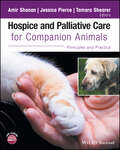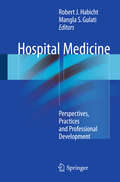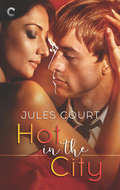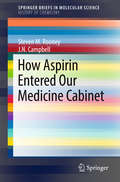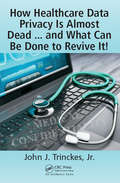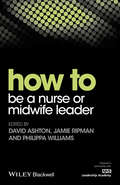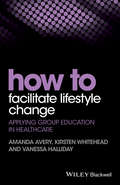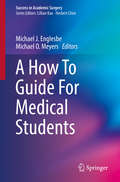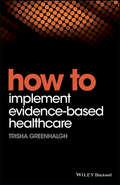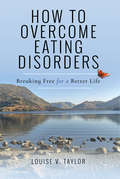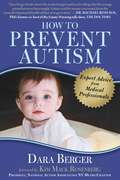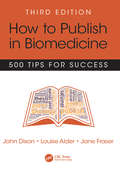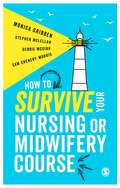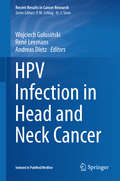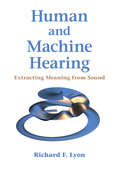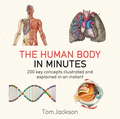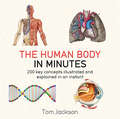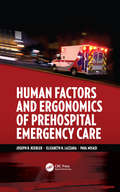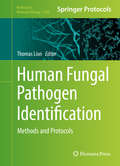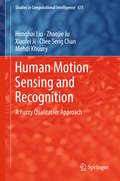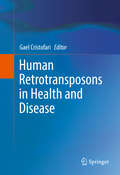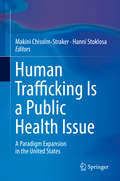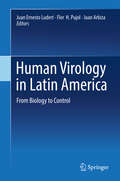- Table View
- List View
Hospice and Palliative Care for Companion Animals: Principles and Practice
by Amir Shanan Jessica Pierce Tamara ShearerHospice and Palliative Care for Companion Animals: Principles and Practice offers the first comprehensive reference to veterinary hospice and palliative care, with practical guidance and best practices for caring for sick and dying animals. Presents the first thorough resource to providing veterinary hospice and palliative care Offers practical guidance and best practices for caring for sick and dying animals Provides an interdisciplinary team approach, from a variety of different perspectives Gives concrete advice for easing pets more gently through their final stage of life Includes access to a companion website with client education handouts to use in practice
Hospital Medicine
by Robert J. Habicht Mangla S. GulatiThis practical resource provides hospitalists of all levels a comprehensive foundation for understanding the critical elements of hospital medicine. Beginning with an overview of the healthcare system, chapters provide relevant insights on management, regulations, evidence-based approaches, an awareness of safety and economic concerns and professional development skills. Perspectives on how hospitalist and hospital medicine teams can effectively engage this system to provide cost-effective, high-quality care are offered throughout this volume. With real-world guidance on the major tenets of hospital medicine, Hospital Medicine will serve as the definitive guide to a successful career in this rapidly evolving specialty.
Hot in the City
by Jules CourtThe first time Detective Brian MacGregor met Priya Shah, he was bleeding. Injured apprehending a suspect, he just needed a few stitches. He didn't expect to feel a gut punch of lust for the beautiful ER doc. But another emergency called her away before he had a chance to ask her out...or kiss her. Or find out if she shared his sudden sex-in-a-dark-hospital-room fantasy. The second time he met Priya, she was protecting a murder witness. Protecting is putting it strongly, if you ask Priya. Her cousin may have witnessed a murder, but she had nothing to do with it. Even if the hot ginger cop seems like the perfect solution to Priya's summer dry spell, they both have more important things to worry about. Like finding Sara before the murderer does. As far as Brian's concerned, Priya is the key-her cousin is bound to come back to her eventually, and when she does, he'll be there. They just need to keep their hands off each other until then. But when attraction burns this hot, it's only so long before someone has to break... This book is approximately 35,000 words One-click with confidence. This title is part of the Carina Press Romance Promise: all the romance you're looking for with an HEA/HFN. It's a promise! Find out more at CarinaPress.com/RomancePromise
How Aspirin Entered Our Medicine Cabinet
by Steven M. Rooney J. N. CampbellThis brief traces the story of one of our most common medicines - aspirin. On a journey involving science, diverse characters, shady business deals, innovative advertising and good old-fashioned luck, Rooney and Campbell describe how aspirin was developed and marketed on a global scale. Starting at the beginning of the twentieth century, the authors explain the use of aspirin during the First World War, the development of competition drugs such as ibuprofen during the interwar years, and the application of aspirin to heart disease in the 1950s and 1960s. On a broader level, Rooney and Campbell show that the development of America's modern pharmaceuticals was a complex weaving of chemistry and mass culture. They argue that aspirin's story provides a way to understand the application of complex chemical formulas in medical results. This brief is of interest to historians of chemistry and medicine as well as the general educated reader.
How Healthcare Data Privacy Is Almost Dead ... and What Can Be Done to Revive It!
by John J. Trinckes, Jr.The healthcare industry is under privacy attack. The book discusses the issues from the healthcare organization and individual perspectives. Someone hacking into a medical device and changing it is life-threatening. Personal information is available on the black market. And there are increased medical costs, erroneous medical record data that could lead to wrong diagnoses, insurance companies or the government data-mining healthcare information to formulate a medical ‘FICO’ score that could lead to increased insurance costs or restrictions of insurance. Experts discuss these issues and provide solutions and recommendations so that we can change course before a Healthcare Armageddon occurs.
How to be a Nurse or Midwife Leader
by David Ashton Jamie Ripman Philippa WilliamsHow to be a Nurse or Midwife Leader is an indispensable guide for all nurses and midwives who wish to develop and improve their practice as leaders. Written in collaboration with the NHS Leadership Academy, this practical book draws on the real experience of over 10,000 nurses and midwives to bring leadership dilemmas to life in specific situations. Key learning features include: How to develop your self-awareness How to develop your personal impact and presence How to survive and thrive How to get your message across How to get the best out of others How to work with and lead other professionals and patients How to have courageous conversations How to balance conflicting demands and needs Containing exercises and reflective questions to help apply theory to leadership practice, How to be a Nurse or Midwife Leader is an ideal companion for all nurses and midwives, whether you are newly qualified, or stepping into a team leader role.
How to Facilitate Lifestyle Change: Applying Group Education in Healthcare
by Vanessa Halliday Amanda Avery Kirsten WhiteheadGroup work and patient education are vital aspects of improving health outcomes in all settings, by supporting patients and clients to manage their conditions, as well as to promote and support behaviour change for improved health. Concise, accessible, and easy-to-read, this new title in the popular How To series is designed to support nutritionists, dietitians, nurses and other healthcare professionals to facilitate healthy lifestyle change through group education. How to Facilitate Lifestyle Change covers the entire group education process, from initial planning, to delivery and evaluation. Topics include agreeing aims and objectives and structuring a session, to considering practical aspects such as setting, managing challenging group members and participant expectations, as well as evaluating and refining a session plan for future use. It also provides an overview of the key evidence base for group learning, relevant theories and models, peer support, and e-learning opportunities. Including case studies to illustrate the real-life application of each topic, practice points, helpful checklists, and a range of practical tips, How to Facilitate Lifestyle Change is the ideal resource to support anyone involved in group patient education and facilitation of health behaviour change.
A How To Guide For Medical Students (Success in Academic Surgery)
by Michael J. Englesbe Michael O. MeyersThis book will be a 'how to' guide for medical students interested in pursuing a career in academic surgery. It will discuss personal traits and rationale for going into academic surgery. It will review accomplishments as a medical student that are key components of beginning an academic career and highlight what makes a student competitive for a surgical program. Sections will be devoted to mentorship, research experience and personal experiences that lead to success. The editors will also focus on gender and work-life balance issues that often are perceived as barriers to a career in academic surgery. It will also provide key dates and sample application information for students to use as templates.
How to Implement Evidence-Based Healthcare
by Trisha GreenhalghFrom the author of the bestselling introduction to evidence-based medicine, this brand new title makes sense of the complex and confusing landscape of implementation science, the role of research impact, and how to avoid research waste. How to Implement Evidence-Based Healthcare clearly and succinctly demystifies the implementation process, and explains how to successfully apply evidence-based healthcare to practice in order to ensure safe and effective practice. Written in an engaging and practical style, it includes frameworks, tools and techniques for successful implementation and behavioural change, as well as in-depth coverage and analysis of key themes and topics with a focus on: Groups and teams Organisations Patients Technology Policy Networks and systems. How to Implement Evidence-Based Healthcare is essential reading for students, clinicians and researchers focused on evidence-based medicine and healthcare, implementation science, applied healthcare research, and those working in public health, public policy, and management.
How to Overcome Eating Disorders: Breaking Free for a Better Life
by Louise V. TaylorIf you want to gain a better understanding of eating disorders, including anorexia, bulimia and binge eating disorder, this book is for you. It looks at theories about the causes of eating disorders, including susceptibility studies, personality traits, genetics, the effects of personal circumstances, societal/media pressures, family influences and more.The health risks are covered and the damage caused by eating disorders is made clear. This information, especially, will help some sufferers find the strength and determination to fight their disease and break free.The book explains the logic of eating disordered individuals, with some using food or weight control as a coping mechanism to block out painful emotions. It will enable the reader to better understand why some people with eating disorders behave as they do.It looks at the latest research, and new and emerging treatments are discussed, as well as established treatments and their success rates. In addition to conventional treatments medical, psychological and therapeutic the book considers complimentary therapies that may support an individual's recovery.It also includes nutritional information, to help those who are frightened of food, because they feel out of control around it, or are afraid of being overweight. There is a chapter on adjusting to change, recovery strategies and a look at why pro-ana communities are unhelpful, suggesting healthier social groups and past-times.The book contains extensive case studies of people who have battled with anorexia and bulimia, looking at some of the things that may have played a role in their disease, such as abuse, bullying, loneliness, low self-esteem, unhappiness and pressures to conform.
How to Prevent Autism: Expert Advice from Medical Professionals
by Dara Berger Dr Sidney Baker Dr Nancy O'Hara Geri Brewster Maureen McDonnel Scott Smith Dr Anju Usman James Lyons-Weiler Kim Mack Rosenberg Dr Stephanie Seneff Maria Rickert-Hong Katie Wright Corinne Simpson BrownThe statistics are alarming and become more so every year. The Centers for Disease Control and Prevention estimates that 1 in 68 children have been identified with an autism spectrum disorder, making it one of the fastest growing developmental disorders in the United States. Further, the CDC estimates that parents with a child on the autism spectrum can have nearly a 20 percent chance of having a second child with autism.In How to Prevent Autism, Dara Berger shares her personal journey with autism. She describes everything that went wrong with her son that led to an autism diagnosis and everything she did differently to prevent her daughter from suffering the same fate. She interviews eight well-known ASD experts--including doctors, nutritionists, nurses, and scientists--about the factors that have led to the growing epidemic of autism. Based on the best practices for preventing autism in children, each professional offers perspectives grounded in their own research and their patients’ improvements. The book covers every detail--from the importance of mothers’ cleaning out their bodies preconception, through common genetic mutations that may put children at risk, to the crucial role of nutrition in prevention.All parents agree that every choice counts when it comes to the health of their children. As Dara Berger makes clear in this personal, informative, and authoritative book, the stakes could not be higher when it comes to autism.
How to Publish in Biomedicine: 500 Tips for Success, Third Edition (Radcliffe Ser.)
by John Dixon Louise Alder Jane FraserGetting published is crucial for success in biomedicine. Whether you are a beginner or an experienced writer, you will find this book has fresh, practical tips on everyday issues. Based on the authors’ successful training courses and extensive experience of healthcare communications, this book will answer your questions and help you to avoid the most frequent problems and pitfalls. The book is designed to be very practical, and to be used when you are actually writing. It does not need to be read straight through from beginning to end before you get started. Instead, just dip into any chapter and you will find a range of tips relevant to the material you are working on right now.
How to Survive your Nursing or Midwifery Course: A Toolkit for Success
by Sam Chenery-Morris Monica Gribben Stephen McLellan Debbie McGirrNursing and midwifery are inspiring and amazing professions – but as your students face the realities of juggling work, study and life, they may now be thinking ‘what did I let myself in for’? This book is designed to help students that are struggling and need a little (or a lot of) guidance. It’s packed with useful information and practical exercises to help them cope with all the major sources of stress for nursing and midwifery students – including: juggling time succeeding in assignments and exams understanding what’s expected in real life and on placements managing finances coping with stress applying for jobs and more Written by authors who have helped countless students from a wide range of backgrounds conquer their problems, this book will be something students can come back to again and again to help them succeed on their journey to becoming a registered nurse or midwife.
How to Survive your Nursing or Midwifery Course: A Toolkit for Success
by Sam Chenery-Morris Monica Gribben Stephen McLellan Debbie McGirrNursing and midwifery are inspiring and amazing professions – but as your students face the realities of juggling work, study and life, they may now be thinking ‘what did I let myself in for’? This book is designed to help students that are struggling and need a little (or a lot of) guidance. It’s packed with useful information and practical exercises to help them cope with all the major sources of stress for nursing and midwifery students – including: juggling time succeeding in assignments and exams understanding what’s expected in real life and on placements managing finances coping with stress applying for jobs and more Written by authors who have helped countless students from a wide range of backgrounds conquer their problems, this book will be something students can come back to again and again to help them succeed on their journey to becoming a registered nurse or midwife.
HPV Infection in Head and Neck Cancer
by Wojciech Golusiński C. René Leemans Andreas DietzThis book is exceptional in presenting an interdisciplinary approach to the subject of human papillomavirus (HPV) infection in the context of head and neck cancer. Leading experts in the field discuss the epidemiology and molecular biology of HPV-positive head and neck squamous cell carcinoma, HPV testing, the nonsurgical and surgical treatment of HPV-positive tumors, predictive factors for outcome and quality of life, and ongoing trials on the effectiveness of vaccination in disease prevention. It also provides recommendations for testing, diagnosis treatment and vaccination. Otolaryngologists, head and neck surgeons, medical oncologists, radiation oncologists, molecular biologists and pathologists will find this book a valuable resource.
Human and Machine Hearing: Extracting Meaning From Sound
by Richard F. LyonHuman and Machine Hearing is the first book to comprehensively describe how human hearing works and how to build machines to analyze sounds in the same way that people do. Drawing on over thirty-five years of experience in analyzing hearing and building systems, Richard F. Lyon explains how we can now build machines with close-to-human abilities in speech, music, and other sound-understanding domains. He explains human hearing in terms of engineering concepts, and describes how to incorporate those concepts into machines for a wide range of modern applications. The details of this approach are presented at an accessible level, to bring a diverse range of readers, from neuroscience to engineering, to a common technical understanding. The description of hearing as signal-processing algorithms is supported by corresponding open-source code, for which the book serves as motivating documentation.
The Human Body in Minutes (IN MINUTES)
by Tom JacksonA concise and illuminating tour of the human body - learn about how our bodies work and why they work the way they do, in minutes. From the basic unit of the cell, through the tissues and organs that make up the body's systems, to how these systems work together to form a complete human being, this book takes you on a journey through our anatomy and its intricate workings - and looks beyond to explore human evolution, inheritence and genetics, human behaviour, disease, death and medicine and how technology will transform the body of the future.With 200 cutting-edge anatomical images, cross-sections and close-ups that detail and explain the brain, eye, heart, skin, skeleton, lung, kidney, ear, blood, liver, stomach, muscles, veins, arteries, DNA, chromosomes and all of the key features of our bodies, this is the perfect, easy reference to the anatomy, physiology and science of the human body.
The Human Body in Minutes (In Minutes)
by Tom JacksonThis concise, illuminating guide takes us on a comprehensive tour of our bodies, explaining how they work and why they work that way, from the basic unit of the cell, through the tissues and organs that make up the body's systems, to how these systems work together to form a complete human being, from evolution, genetics, and conception through to disease, death, and how technology will transform the body of the future.The Human Body in Minutes covers the features and functions of all the major body systems including the skeletal, muscular, digestive, respiratory, cardiovascular, immune, reproductive, nervous, and hormonal systems, as well as human evolution, inheritance and genetics, human behavior, and illness and medicine.With 200 cutting-edge anatomical images, cross-sections, and closeups that detail and explain the brain, eye, heart, skin, skeleton, lung, kidney, ear, blood liver, stomach, muscles, veins, arteries, DNA, chromosomes, and all of the key features of our bodies, this is the perfect, easy reference to the anatomy, physiology, and science of the human body.
Human Factors and Ergonomics of Prehospital Emergency Care
by Joseph R. Keebler Elizabeth H. Lazzara Paul MisasiThis book provides an introduction to the field of human factors for individuals who are involved in the delivery and/or improvement of prehospital emergency care and describes opportunities to advance the practical application of human factors research in this critical domain. Relevant theories of human performance, including systems engineering principles, teamwork, training, and decision making are reviewed in light of the needs of current day prehospital emergency care. The primary focus is to expand awareness human factors and outlay the potential for novel and more effective solutions to the issues facing prehospital care and its practitioners.
Human Fungal Pathogen Identification
by Thomas LionThis detailed volume presents timely and authoritative content offering a comprehensive overview of the current state of the art in fungal diagnostics. Moreover, it addresses on-going developments expected to provide a basis for targeted treatment strategies resulting in improved outcome of invasive mycoses. The knowledge of host-related predisposing factors and stratified treatment options facilitating timely onset of adequate antifungal therapy are critical for successful clinical management and outcome of invasive fungal disease (IFD), requiring not only rapid diagnosis of a fungal infection and identification of the causative species, but also assessment of pathogen/host factors related to pathogenicity, susceptibility, and response to treatment. Written for the highly successful Methods in Molecular Biology series, chapters include introductions to their respective topics, lists of the necessary materials and reagents, step-by-step, readily reproducible protocols, and tips on troubleshooting and avoiding known pitfalls. Authoritative and practical, Human Fungal Pathogen Identification: Methods and Protocols serves as an ideal reference for researchers investigating the ever-growing worldwide healthcare problems involving fungal infections.
Human Motion Sensing and Recognition: A Fuzzy Qualitative Approach (Studies in Computational Intelligence #675)
by Honghai Liu Zhaojie Ju Xiaofei Ji Chee Seng Chan Mehdi KhouryThis book introduces readers to the latest exciting advances in human motion sensing and recognition, from the theoretical development of fuzzy approaches to their applications. The topics covered include human motion recognition in 2D and 3D, hand motion analysis with contact sensors, and vision-based view-invariant motion recognition, especially from the perspective of Fuzzy Qualitative techniques.With the rapid development of technologies in microelectronics, computers, networks, and robotics over the last decade, increasing attention has been focused on human motion sensing and recognition in many emerging and active disciplines where human motions need to be automatically tracked, analyzed or understood, such as smart surveillance, intelligent human-computer interaction, robot motion learning, and interactive gaming. Current challenges mainly stem from the dynamic environment, data multi-modality, uncertain sensory information, and real-time issues.These techniques are shown to effectively address the above challenges by bridging the gap between symbolic cognitive functions and numerical sensing & control tasks in intelligent systems. The book not only serves as a valuable reference source for researchers and professionals in the fields of computer vision and robotics, but will also benefit practitioners and graduates/postgraduates seeking advanced information on fuzzy techniques and their applications in motion analysis.
Human Retrotransposons in Health and Disease
by Gael CristofariThis unique book explores the role of retrotransposons in human health and disease. The ability of retrotransposons to affect the structure of human genes is recognized since the late 80's. However, the advances of deep-sequencing technologies have shed new light on the extent of retrotransposon-mediated genome variations. These progresses have also led to the discovery that retrotransposon activity is not restricted to the germline - resulting in inheritable genetic variations - but can also mobilize in somatic tissues, such as embryonic stem cells, neuronal progenitor cells, or in many cancers. This book covers topics related to the effects of retrotransposon insertions, and their consequences on germline and somatic genome dynamics, but also discuss the role and impact of retrotransposons sequences in a broader context, including a number of novel topics that emerged recently (long non-coding RNA, neuronal disorders, exaptation) with unexpected connections between retrotransposons, stem cell maintenance, placentation, circadian cycles or aging.
Human Tooth Crown and Root Morphology
by Scott G. Richard Irish Joel D.This guide to scoring crown and root traits in human dentitions substantially builds on a seminal 1991 work by Turner, Nichol, and Scott. It provides detailed descriptions and multiple illustrations of each crown and root trait to help guide researchers to make consistent observations on trait expression, greatly reducing observer error. The book also reflects exciting new developments driven by technology that have significant ramifications for dental anthropology, particularly the recent development of a web-based application that computes the probability that an individual belongs to a particular genogeographic grouping based on combinations of crown and root traits; as such, the utility of these variables is expanded to forensic anthropology. This book is ideal for researchers and graduate students in the fields of dental, physical, and forensic anthropology and will serve as a methodological guide for many years to come.
Human Trafficking Is a Public Health Issue: A Paradigm Expansion in the United States
by Makini Chisolm-Straker Hanni StoklosaThis clear-sighted reference examines the public health dimensions of labor and sex trafficking in the United States, the scope of the crisis, and possibilities for solutions. Its ecological lifespan approach globally traces risk and protective factors associated with this exploitation, laying a roadmap towards its prevention. Diverse experts, including survivors, describe support and care interventions across domains and disciplines, from the law enforcement and judicial sectors to community health systems and NGOs, with a robust model for collaboration. By focusing on the humanity of trafficked persons, a public health paradigm broadens our understanding of and ability to address trafficking while adding critical direction and resources to the criminal justice and human rights structures currently in place. Among the topics covered:Children at Risk: Foster Care and Human TraffickingLGBTQ Youth and Vulnerability to Sex TraffickingPhysical Health of Human Trafficking Survivors: Unmet EssentialsResearch Informing Advocacy: An Anti-Human Trafficking ToolCaring for Survivors Using a Trauma-Informed Care FrameworkThe Media and Human Trafficking: Discussion and Critique of the Dominant NarrativeHuman Trafficking Is a Public Health Issue is a sobering read; a powerful call to action for public health professionals, including social workers and health care practitioners providing direct services, as well as the larger anti-trafficking community of advocates, prosecutors, taskforce members, law enforcement agents, officers, funders, and administrators. “An extraordinary collection of knowledge by survivors, academics, clinicians, and advocates who are experts on human trafficking. Human Trafficking is a Public Health Issue is a comprehensive offering in educating readers on human trafficking through a multi-pronged public health lens.”Margeaux Gray: Survivor, Advocate, Artist, Public Speaker
Human Virology in Latin America
by Juan Ernesto Ludert Flor H. Pujol Juan ArbizaThis book is a compilation of some of the most remarkable contributions made by scientists currently working in Latin America to the understanding of virus biology, the pathogenesis of virus-related diseases, virus epidemiology, vaccine trials and antivirals development. In addition to recognizing the many fine virologists working in Latin America, Human Virology in Latin America also discusses both the state-of-the-art research and the current challenges that are being faced in the region, in hopes of inspiring young scientists worldwide to become eminent virologists.
